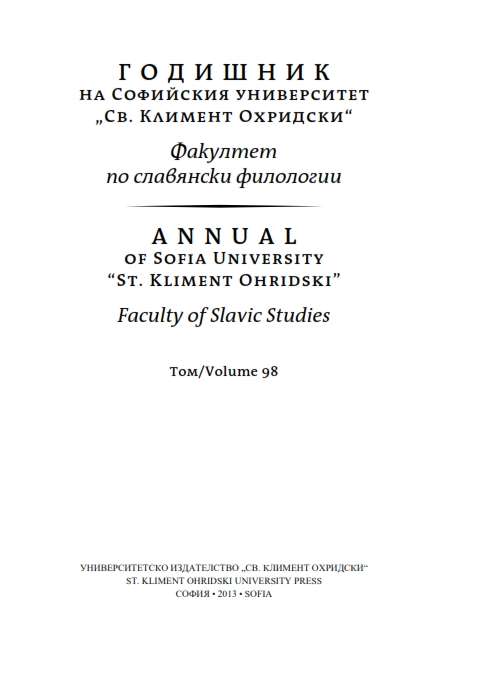Акцентни модели на някои съществителни от мъжки и женски род
Accent models of some substantives in masculine and feminine gender
Author(s): Mirena PatsevaSubject(s): Language studies, Language and Literature Studies, Applied Linguistics, Cognitive linguistics, Philology
Published by: Софийски университет »Св. Климент Охридски«
Keywords: Accent models; language; substantives; cognitive theory; optimality theory
Summary/Abstract: Bulgarian accent is a stumbling block for foreign students acquiring Bulgarian language. The paper presents the basic accent models of some substantive in masculine and feminine gender. The stress falls mostly on the last two and rarely on the antepenult syllable. The weight to stress principle (WSP) is satisfied in most of the cases: in 68% by masculine gender and in 53% by feminine. The correspondence is greater by masculine gender because most of the words end with consonant and have final accent more often. The principle is better accomplished by two- and three-syllable substantives than in longer words. We can consider WSP as valid principle for Bulgarian language but not as one of primer importance. The dominant models for the most often used substantive show a curious trend: masculine substantives have iambic foot, and feminine – trochaic. The first one is known in prosody as rising, ascending or masculine, and the second one – as descending or feminine. This coincidence is interpreted by the iamb/trochaic law of Hayes and the Grouping harmony cognitive theory of Smolensky and Prince in the frame of the Optimality theory.
Journal: Годишник на Софийския университет „Св. Климент Охридски“, Факултет по славянски филологии
- Issue Year: 2013
- Issue No: 98
- Page Range: 83-106
- Page Count: 23
- Language: Bulgarian

